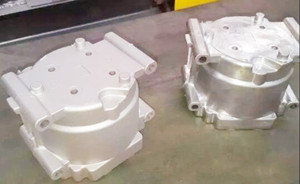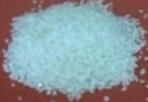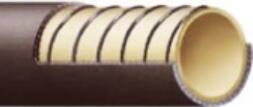- SITEMAP
- CONTACT US
- 8618267732328
News
Credibility ,the lifeblood of enterprise!
- Fittings
- Butt Welding Fittings
- Forged Fittings
- 180 Degree Elbows
- 90 Degree Elbows
- 60 Degree Elbows
- 45 Degree Elbows
- 30 Degree Elbows
- Equal Tee
- Reducing Tee
- Concentric Reducer
- Eccentric Reducer
- Lap Joint Stub End
- Outlets
- Cap
- Bend
- Cross
- Coupling
- Stainless Steel Lateral Tee
- Bellows Expansion Joints
- Flexible Metal Hose
- Non-Standard/Custom Fittings
- Bleed & Flushing Rings
- Types of Flanges
- Anchor Flanges
- Blind Flanges
- Expander Flanges
- High Hub Flanges
- Lap Joint Flanges
- Long Weld Neck Flanges
- Nipoflanges
- Orifice Flanges
- Plate Flanges
- Ring Type Joint Flanges
- Reducing Flanges
- Slip On Flanges
- Socket Weld Flanges
- Spectacle Blind Flanges
- Square Flanges
- Spades & Ring Spacers
- Threaded Flanges
- Welding Neck Flanges
What is sand blasting
What is sand blasting?
Sand blasting process
Dry sand blasting process conditions for different parts
There are two kinds of dry sand blasting: mechanical sand blasting and air pressure sand blasting. Each method is divided into manual, non automatic or continuous automatic modes. Manual air pressure sand blasting machine is widely used in China, and it also uses various complex shapes of small and medium-sized parts.
Wet spray Sand technology
The abrasive used in wet sand blasting is the same as that of dry sand blasting. The abrasive can be mixed with water to form mortar. The abrasive is usually 20% - 35% and stirred continuously to prevent sinking. Compressed air is used to press into the nozzle and sprayed to the parts. Sand and water can be put into the tank respectively and mixed before flowing to the nozzle before spraying to the parts. In order to prevent corrosion of steel parts, sodium nitrite and other corrosion inhibitors must be added in water, Sand should be dried before next use.
There are many kinds of equipment for wet sand blasting machine, and the most commonly used one is sand blasting chamber.
Spray Pill Technology
(1) General On
Shot peening is similar to sand blasting, but steel shot or glass shot is used instead of abrasive for sand blasting. Shot peening can produce compressive stress on parts, and there is no dust pollution containing silicon. This process is mainly used for:
- (1) The fatigue strength and stress corrosion resistance of the parts are improved by compressive stress.
- (2) Straighten the twisted thin-walled parts.
- (3) Instead of the general cold and hot forming process, the large thin-walled aluminum parts are processed, which can avoid the high residual on the surface of the parts Tensile stress And the favorable compressive stress is formed.
- It should be noted that the service temperature of the parts after shot peening should not be too high, otherwise, the compressive stress will be eliminated and the expected effect will be lost. The limit of using temperature depends on the material of the parts. For example, the temperature of steel parts is about 260 ~ 290 ℃, and that of aluminum parts is about 170 ℃.
(2) Types of pills
- 1. Cast steel shot: its hardness is generally 40-50HRC. When processing hardware metal, the hardness can be increased to 57-62HRC. Cast steel shot has good toughness and is widely used. Its service life is several times that of cast iron shot.
- 2. Cast iron shot: its hardness is 58-65HRC. It is brittle and easy to be broken. It has short life and is not widely used. It is mainly used in occasions with high strength without shot peening.
- 3. Glass pill: hardness is lower than the former two, mainly used in stainless steel. Titanium, aluminum, magnesium and other materials that do not allow iron contamination can also be used for secondary processing after shot peening to remove iron contamination and reduce surface roughness of parts.
(3) Shot blasting technology
For shot peening, which requires compressive stress on the surface of parts, it must have enough coverage, which is difficult.
In addition, it is difficult to make quantitative judgment. Therefore, the method of controlling shot peening strength is often adopted, that is, the method requiring a certain sandblasting degree is required, that is, the required stress value can be obtained after reaching a certain sandblasting strength. The shot peening strength is mostly in accordance with the American SAE standard J442.
Almen arc altimeter was used for measurement
Almen arc height meter uses 1070 cold rolled steel with thickness of 0.8 mm, 1.3 mm or 2.4 mm. Compared with 70 carbon steel in China, its hardness is 44-50 HRC. The shot peening strength can be obtained by measuring the arc height of bent steel bar. The shot peening strength is mainly affected by the following factors:
- (1) Shot size: the larger the shot peening, the greater the impact energy, the greater the shot peening intensity, and the shot peening coverage. Therefore, on the premise of producing the required shot peening strength, it is beneficial to reduce the shot size as much as possible.
- In addition, the selection of shot peening size is also limited by the shape of shot peening parts, and its diameter should not exceed half of the radius of the inner circle of the groove. The particle size of shot peening is generally 2.00-0.30mm
- (2) Hardness of Shot Peening: when the hardness is greater than the hardness of parts, the change of shot peening hardness value does not affect the shot peening strength, otherwise, the decrease of shot peening hardness will reduce the shot peening strength.
- (3) Shot peening speed: when the shot peening speed is increased, the shot peening intensity will be increased, but if the shot peening speed is too high, the crushing amount will increase.
- (4) Spray angle: when it is vertical, the shot peening intensity is the highest. Therefore, shot peening is generally carried out in this state. If it is necessary to peen at a small angle due to the shape of the parts, the size and speed of shot peening shall be appropriately increased.
- (5) Shot peening fragmentation: the shot peening strength of crushing shot blasting is low, so the shot peening should be removed frequently to ensure that the integrity of shot peening is not less than 85%. In addition, the shot with sharp angle will scratch the parts.
Function and application of sand blasting

Type of sand blasting machine
Suction dry sand blasting machine
Press in dry sand blasting machine
Liquid sand blasting machine
Grade of sand blasting
- SA1 - equivalent to sspc-sp7 in the United States. The general simple manual brushing and abrasive cloth grinding methods are adopted, which is the lowest level of the four kinds of cleanliness, and the protection of the coating is only slightly better than that of the untreated workpiece. Technical standard for SA1 treatment: the workpiece surface shall be free of oil, grease, residual oxide scale, rust spots, residual paint and other dirt. Grade SA1 is also called manual brushing and cleaning grade( Or cleaning level).
- SA2 - equivalent to SSPC-SP6 in the United States. Sand blasting is the lowest level of sand blasting, that is, general requirements, but the protection of the coating is much higher than manual brushing. Technical standard for SA2 level treatment: the workpiece surface shall be free of greasy, dirt, oxide scale, rust scale, paint, oxide, corrosion and other foreign substances (except defects), but the defects shall not exceed 33% per square meter of surface, including slight shadows; A small amount of slight discoloration caused by defects and corrosion; Oxide scale and paint defects. If there is a dent on the original surface of the workpiece, slight rust and paint will remain at the bottom of the dent. SA2 grade is also called commodity cleaning grade (or industrial grade).
- Sa2.5 level - it is widely used in industry and can be used as the acceptance technical requirements and standards. Sa2.5 level is also called near white cleaning level (near white level or out of white level). Technical standard for Sa2.5 treatment: the same as the first half of SA2 requirements, but the defects are limited to no more than 5% per square meter of surface, including slight shadow; A small amount of slight discoloration caused by defects and corrosion; Oxide scale and paint defects.
- SA3 - equivalent to sspc-sp5 in the United States, is the highest treatment level in the industry, also known as white cleaning level (or white level). Technical standard for SA3 treatment: the same as Sa2.5, but 5% of shadows, defects, rust, etc. shall not exist.
Sandblasting raw materials


Operating procedures for sand blasting

Tel No:+86-18267732328 / Email:[email protected]
Address:Longwan District, Wenzhou, Zhejiang Province, China.
Copyright Notice © www.yaang.com Yaang Pipe Industry Co., Limited All rights reserved.
Yaang Pipe Industry Co., Ltd. is an international supplier of piping solutions for flange, butt welding fittings, socket welding fittings and threaded fittings. Our products are widely used in different industrial fields, including oil and gas, chemical industry, petrochemical industry, power plant, pulp and paper industry, environmental and water conservancy engineering, engineering projects, etc.





